Abstract
The triglyceride, cholesterol, and phospholipid contents of heart papillary muscle were measured in groups of obviously healthy and diseased females and males on whom either routine or forensic necropsies were performed. In healthy men the triglyceride content was 1·77 ± 1·30 mg/g of wet weight and in women 1·25 ± 0·48 mg/g wet weight. The corresponding values for cholesterol were 1·07 ± 0·24 mg/g and 1·21 ± 0·22 mg/g and those for phospholipids 17·70 ± 5·15 mg/g and 19·65 ± 10·21 mg/g. The differences between the sexes were not significant.
The hypertensive or cardiac hypertrophy group had about the same or slightly lower means for lipid content.
In the cholelithiasis group, women had significantly high triglyceride values (3·38 ± 2·36 mg/g). The cholesterol values were not significantly elevated in either men or women.
In the diabetic group, triglycerides were significantly increased both in men (mean 8·12 ± 0·54 mg/g) and in women (6·85 ± 5·66 mg/g). The cholesterol mean values were also high in both sexes, but the rise was not significant because of the great variation.
In the coronary atheroma group, both male and female hospital cases had high triglyceride contents (mean 4·48 ± 4·25 mg/g and 3·65 ± 3·94 mg/g) whereas the forensic cases had only slightly elevated or normal values. Cholesterol assays paralleled the triglyceride ones, but phospholipids showed an inverse trend.
The results showed that the lipid content of papillary muscle was increased in diseases where disturbances of lipid metabolism are evident, as in diabetes and cholelithiasis. In coronary atheroma only those cases with advanced obstruction of the arteries were associated with abnormal values of papillary lipids. No increase of the lipid content with age alone was found, nor was there any correlation with obesity.
Full text
PDF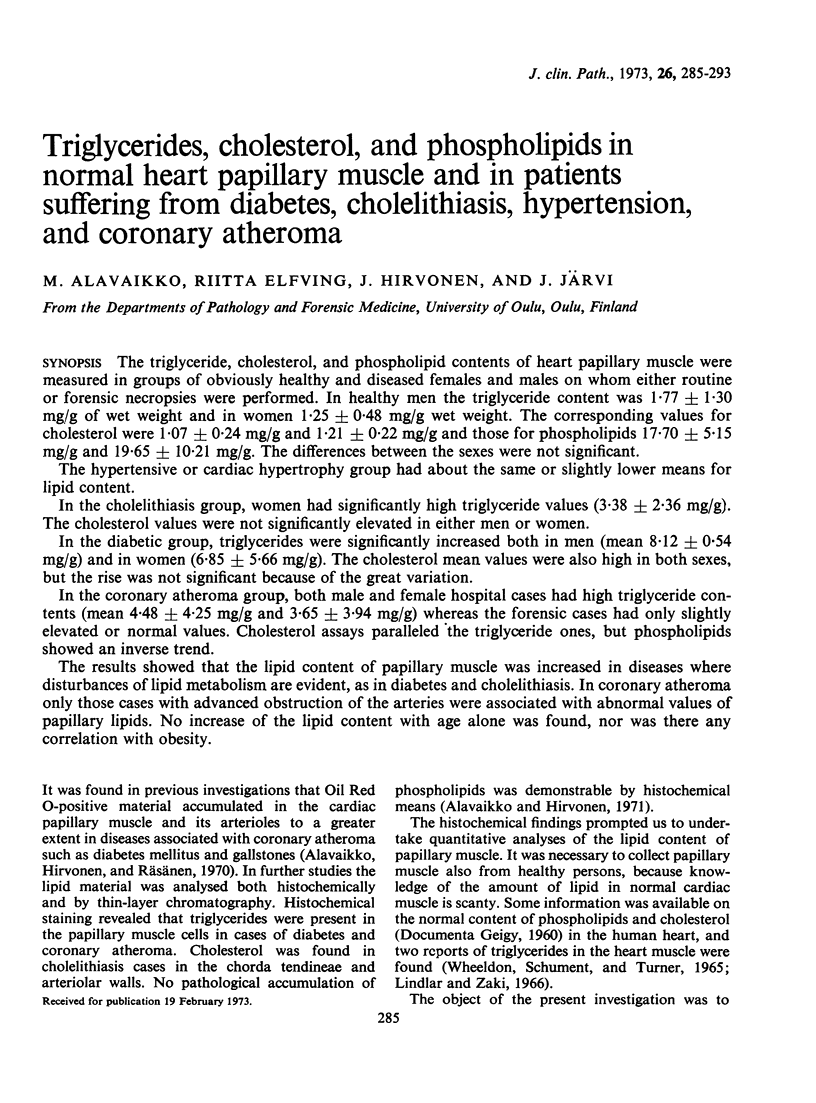
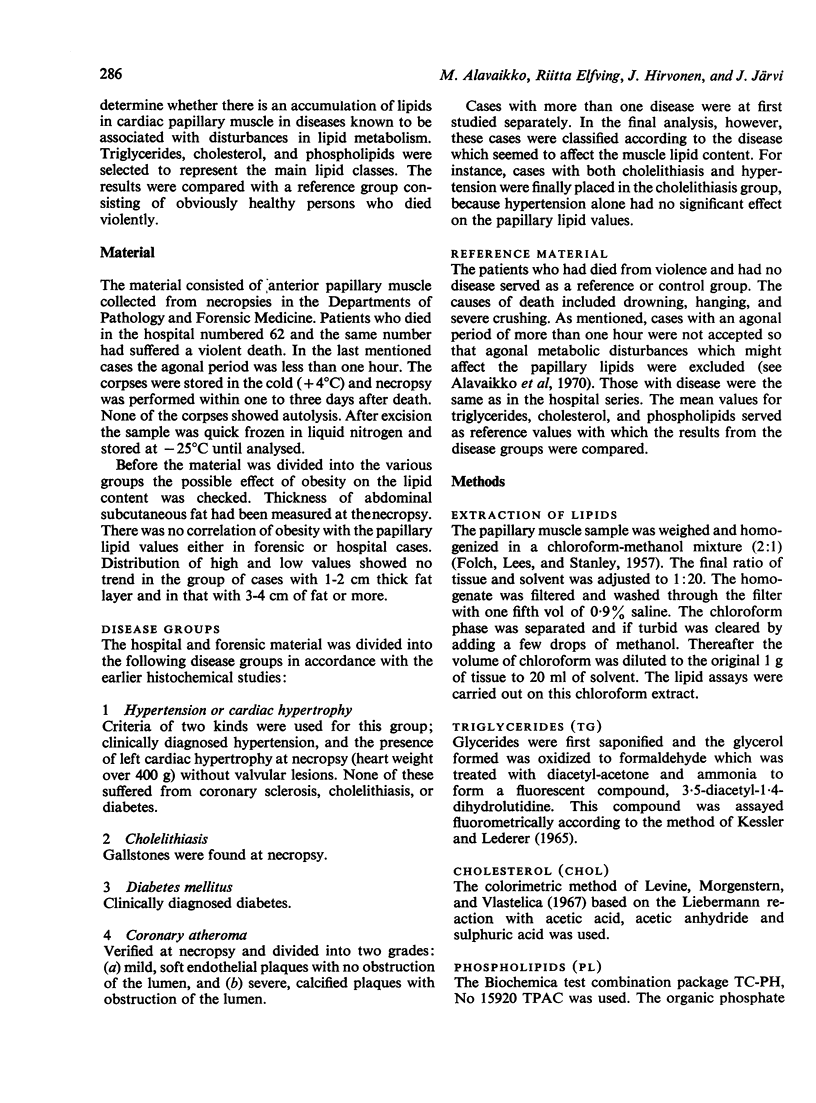
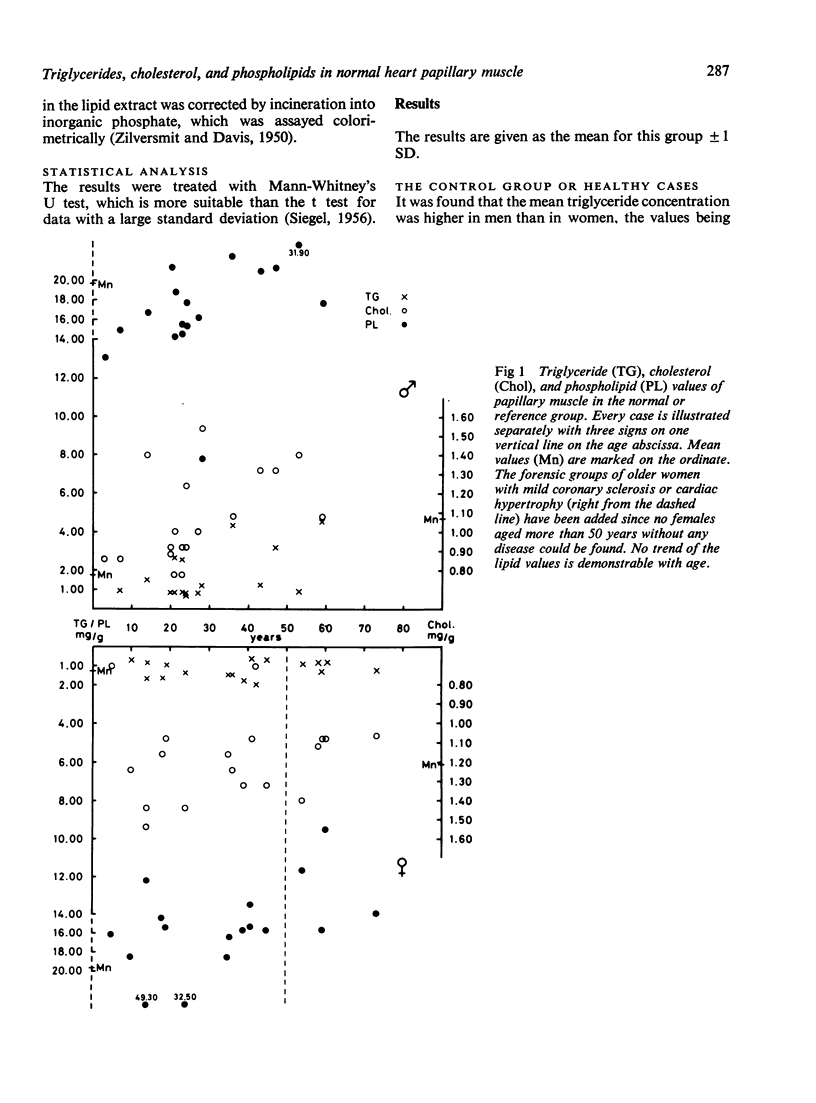
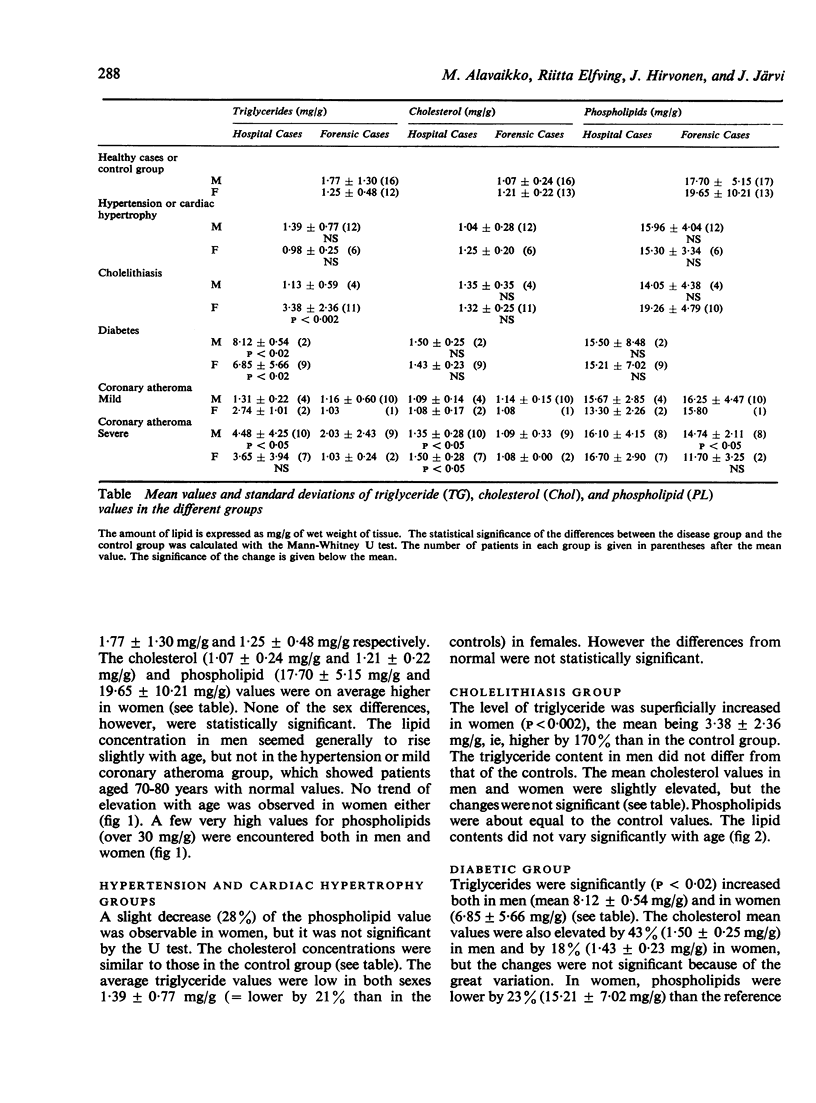
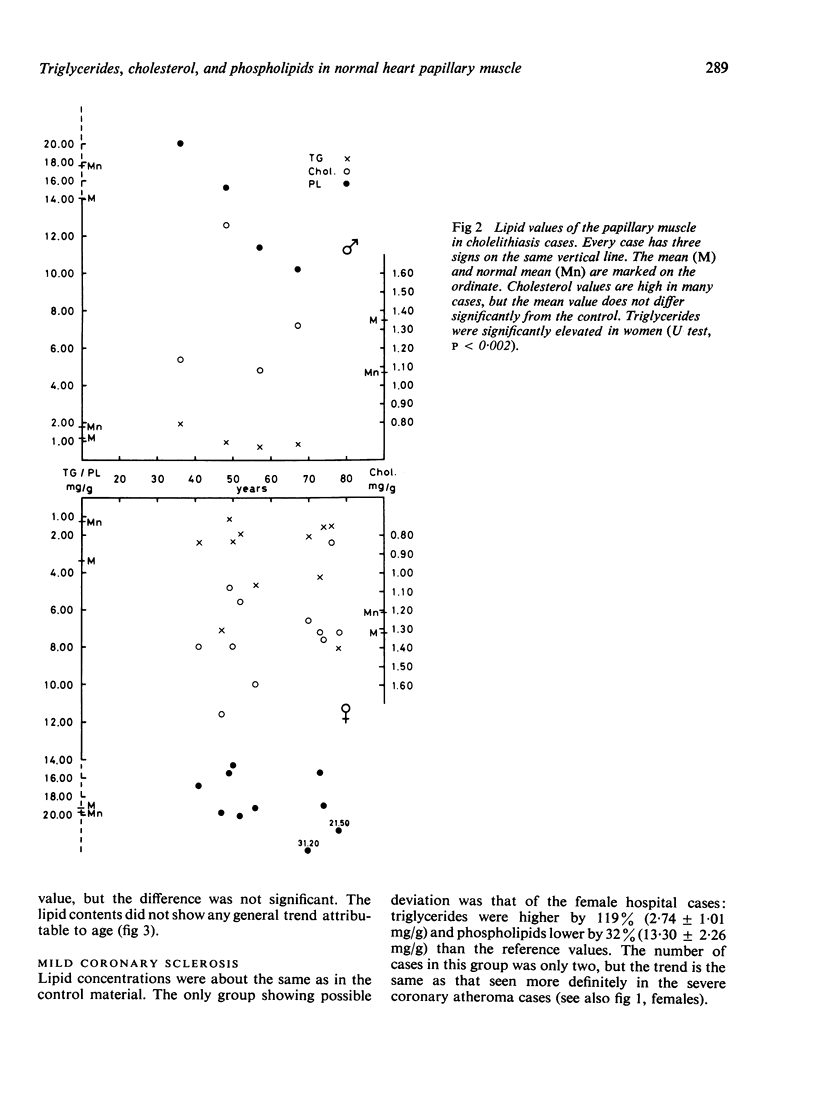

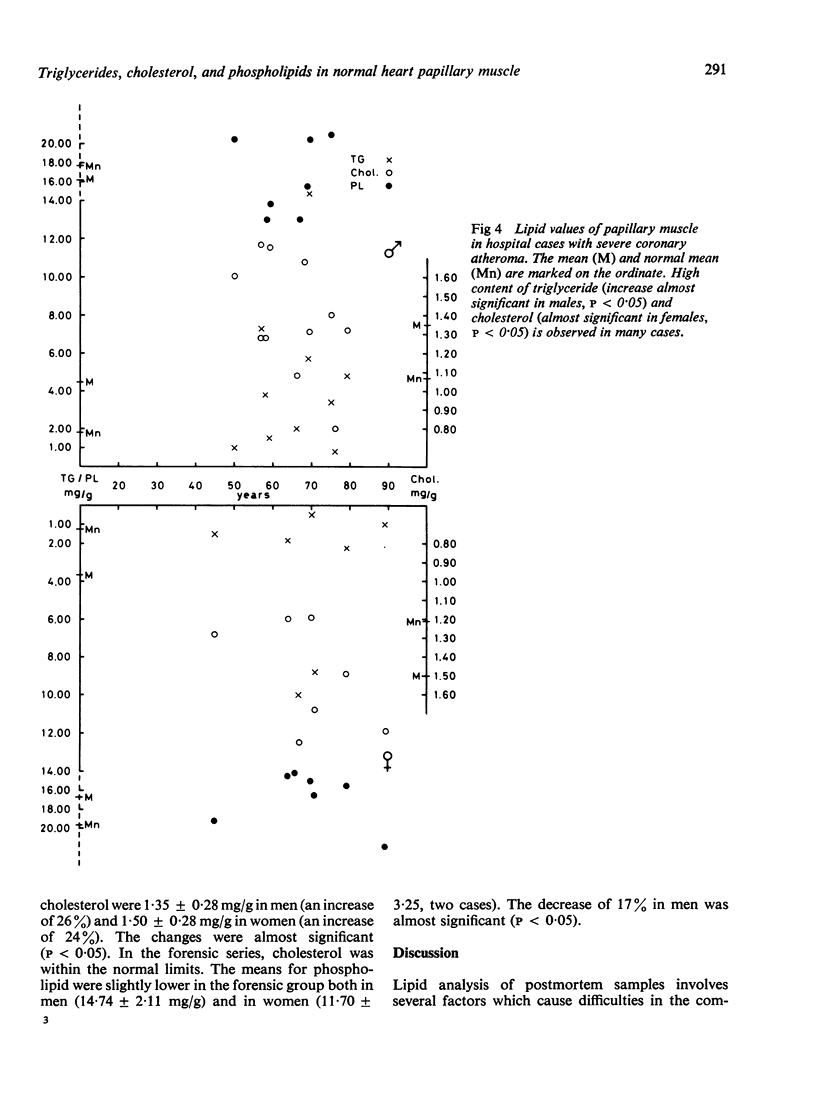
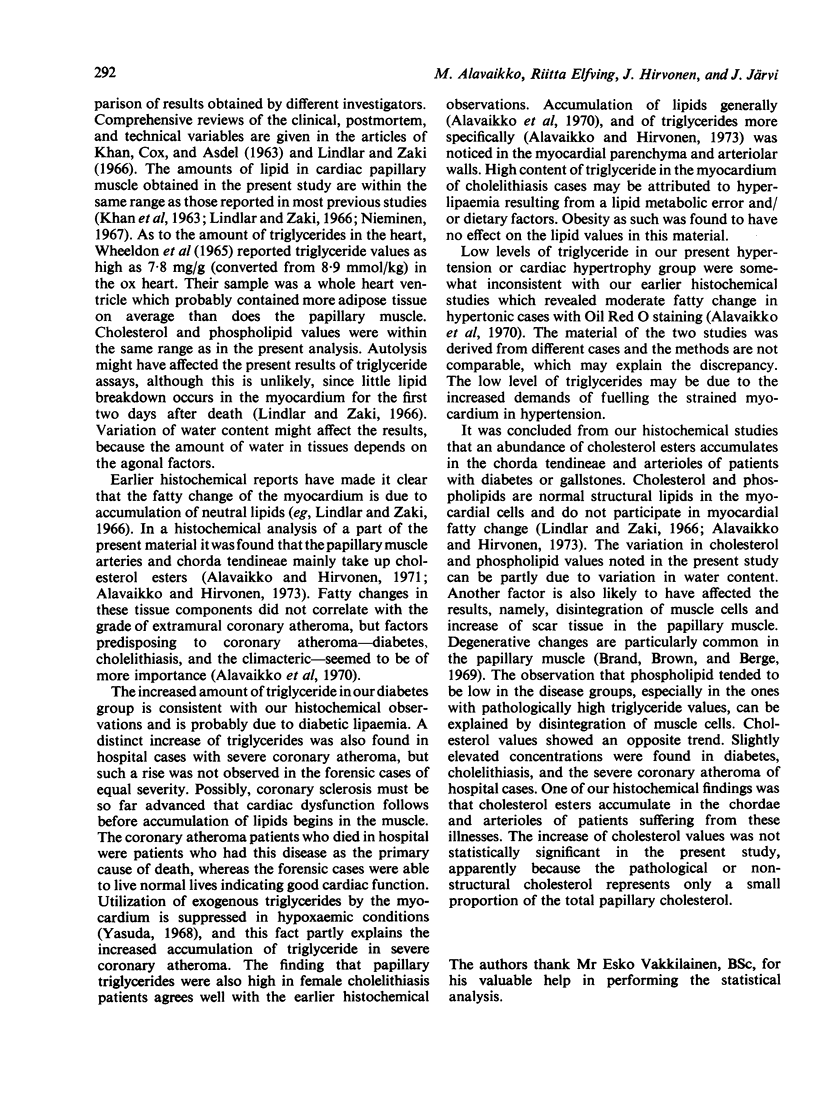
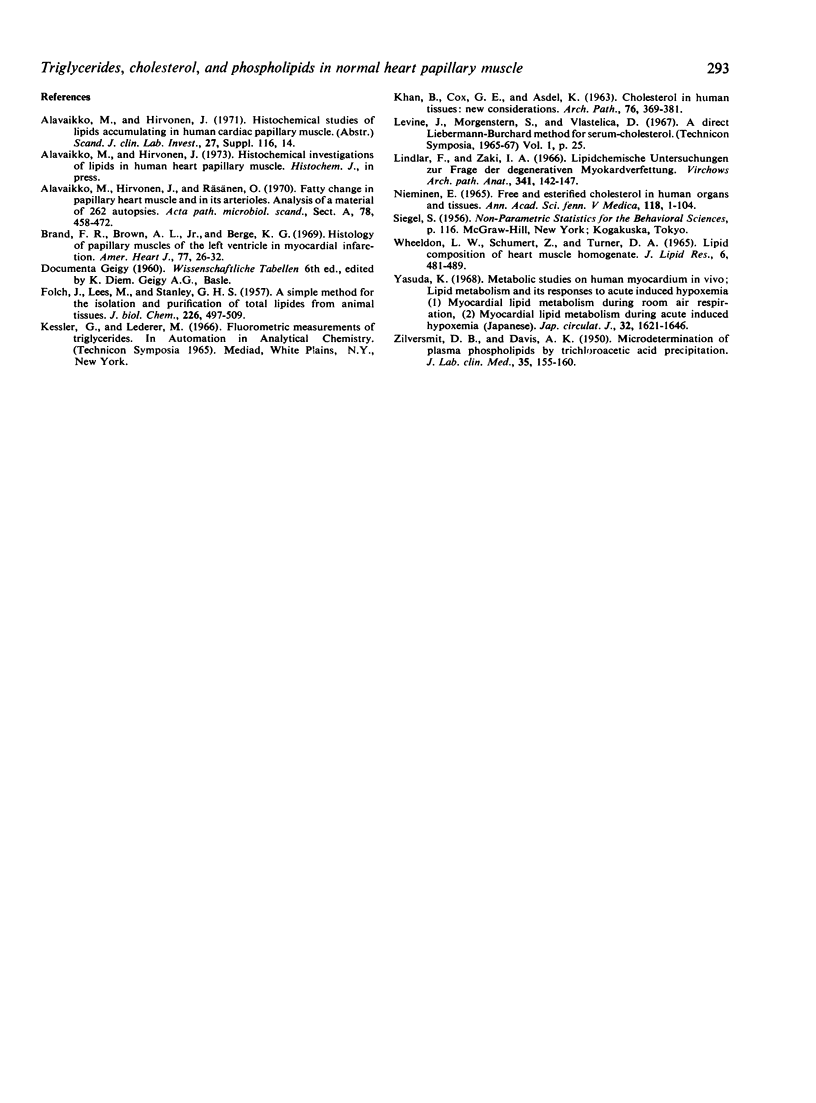
Selected References
These references are in PubMed. This may not be the complete list of references from this article.
- Alavaikko M., Hirvonen J., Räsänen O. Fatty change in papillary heart muscle and in its arterioles. Analysis of a material of 262 autopsies. Acta Pathol Microbiol Scand A. 1970;78(4):458–472. doi: 10.1111/j.1699-0463.1970.tb02526.x. [DOI] [PubMed] [Google Scholar]
- Brand F. R., Brown A. L., Jr, Berge K. G. Histology of papillary muscles of the left ventricle in myocardial infarction. Am Heart J. 1969 Jan;77(1):26–32. doi: 10.1016/0002-8703(69)90126-4. [DOI] [PubMed] [Google Scholar]
- FOLCH J., LEES M., SLOANE STANLEY G. H. A simple method for the isolation and purification of total lipides from animal tissues. J Biol Chem. 1957 May;226(1):497–509. [PubMed] [Google Scholar]
- KHAN B., COX G. E., ASDEL K. CHOLESTEROL IN HUMAN TISSUES. NEW CONSIDERATIONS. Arch Pathol. 1963 Oct;76:369–381. [PubMed] [Google Scholar]
- Nieminen E. Free and esterified cholesterol in human organs and tissues. Ann Acad Sci Fenn A. 1965;118:1–104. [PubMed] [Google Scholar]
- Wheeldon L. W., Schumert Z., Turner D. A. Lipid composition of heart muscle homogenate. J Lipid Res. 1965 Oct;6(4):481–489. [PubMed] [Google Scholar]
- Yasuda K. [Metabolic studies on human myocardium in vivo; lipid metabolism and its response to acute induced hypoxemia. 1. Myocardial lipid metabolism during room air respiration. 2. Myocardial lipid metabolism during acute induced hypoxemia]. Jpn Circ J. 1968 Dec;32(12):1621–1646. [PubMed] [Google Scholar]
- ZILVERSMIT D. B., DAVIS A. K. Microdetermination of plasma phospholipids by trichloroacetic acid precipitation. J Lab Clin Med. 1950 Jan;35(1):155–160. [PubMed] [Google Scholar]


